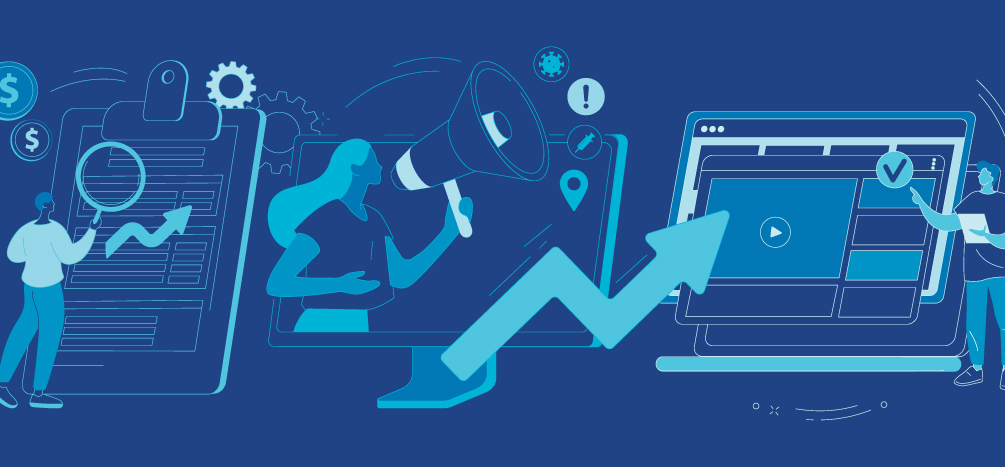Think about the past 18 to 20 months. Many facets of our lives were (and still are) in flux. The same is true for municipalities, school districts, counties and states. Pandemic-related responses stretched public servants beyond their job descriptions, and they showed up: creating life-saving workarounds for the public; cutting through bureaucratic red tape to streamline benefits; rethinking how to serve constituents in need; launching digital tools and services to empower employees and the public in new ways; and more. This guide provides use cases and practical tips for ensuring that the progress made during the pandemic sticks. In conversation, innovation and technology intertwine, but technology alone isn’t innovation. True innovation gets to the heart of how governments use tech to improve outcomes, save lives and empower employees to serve at their best. Download the guide to read more about how agencies at the state and local levels are advancing with the latest technology.
3 Things You Can Do Now to Rethink Innovation
“Innovation came in waves in the past 18 months. It started with agencies having to reinforce technology’s critical role in their daily operations. ‘I think the second wave of innovation is realizing the opportunity to work differently,’ said Kevin Tunks, National Technology Adviser for State and Local Government at Red Hat, a leader in enterprise open source software innovation. Red Hat is a proponent of using human-centered design to shape positive employee interactions with technologies and impactful customer experiences with government services. ‘I think this pandemic forced everybody to step off the treadmill collectively and rethink how we want to go forward,’ Tunks said. But what does that look like in practice?”
Read more insights from Red Hat’s National Technology Adviser for State and Local Government, Kevin Tunks.
Is Your Relationship With Data Helping or Hurting Innovation?
“Your data has a time value, whether you’ve explicitly acknowledged it or not. ‘What we’ve seen at the forefront is this concept of needing to have readily available, reliable data for critical decision-making,’ said Matt Walk, Director of State/Local Government for the Eastern U.S. at Snowflake, a data platform provider. Although states have focused on modernizing their systems for years, the pandemic created a sense of urgency. It reinforced that the stakes are much higher in terms of the ability to quickly access data to make critical decisions, Walk said. This is especially true as states transition from responding to the pandemic to recovering from it. The success of these efforts depends on the extent to which states eliminate silos and embrace a more data-driven, enterprise-focused approach to governing.”
Read more insights from Snowflake’s Director of State/Local Government for the Eastern U.S., Matt Walk.
 Why Innovation Must Account for the Identity Factor
Why Innovation Must Account for the Identity Factor
“The reach of government services hinges on recipients’ ability to prove that they are who they claim to be. However, with the adoption of social distancing practices, the once routine transaction of identification became a logistical and security headache for many agencies. This adjustment particularly impacted departments of motor vehicles and heavily paper-based agencies that had not embraced digital transformation. Then the pandemic hit. Not only were many agencies scrambling to prove identities for large swaths of employees needing remote access to administer government services and benefits, but they also had to provide the same electronic services to the public in need of those services. Embracing the changes was an example of breakthrough innovation for agencies that were forced to adapt. But what can leaders do to sustain and build on this progress?
Read more insights from BeyondTrust’s Chief Security Officer, Morey Haber.
3 Ways to Embed Innovation in Your IT Roadmap
“Remote employees may be sharing Wi-Fi with non-government employees on their home networks. Are agencies prepared to address ongoing challenges with security risks and network performance issues as employees compete for bandwidth when working remotely? Among the drivers is the president’s cybersecurity executive order that calls for adopting a zero-trust security model, where implicit trust of any device, node or user is replaced with continuous verification. The mandate is for federal agencies, but the trickle-down impact will affect state and local governments, too.”
Read more insights from SolarWinds’ CISO Tim Brown.
How to Support Lasting and Agile Transformation
“Innovation isn’t typically associated with citizen-facing government services, such as state toll roads, some transit authorities or even public school systems. That’s changing, though, as more governments embrace transformation as a continuous and holistic evolution — backed by formal strategy, dedicated funding, clear roles and expertise. Dick Stark, President of RightStar, an Atlassian verified Government Partner and IT service management provider, has seen these truths unfold across agencies as they embrace Agile and DevOps methods. Take the New Jersey Turnpike Authority, which operates two of the busiest toll roads in the country, for instance. By partnering with RightStar, the agency modernized and consolidated its IT operations, including service incidents and asset management, and tracking functions outside IT, such as intelligent device signage and cameras.”
Read more insights from RightStar’s President, Dick Stark.
How to Make State and Local Innovation Last
“The COVID-19 pandemic revealed a hard truth – state and local governments cannot always meet the public’s needs in person. To adapt, many agencies had to deliver their products and services digitally for the first time. How can agencies sustain this innovation permanently? With more public-sector workforces mixing onsite and remote employees while addressing public preferences, this question’s relevance grows daily. Cloud content management can become a strong component of lasting innovation. Using cloud computing’s decentralized IT, agencies can access computing resources such as data storage on demand. Ultimately, this power can help agencies create innovative digital workflows that serve constituents wherever they are.”
Read more insights from Box’s Managing Director for State and Local Government, Murtaza Masood.
Download the full GovLoop Guide for more insights from these state and local leaders and additional government interviews, historical perspectives and industry research on the future of innovation.







